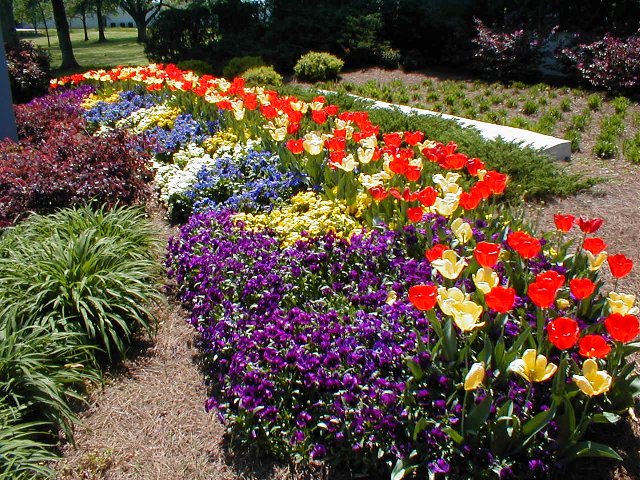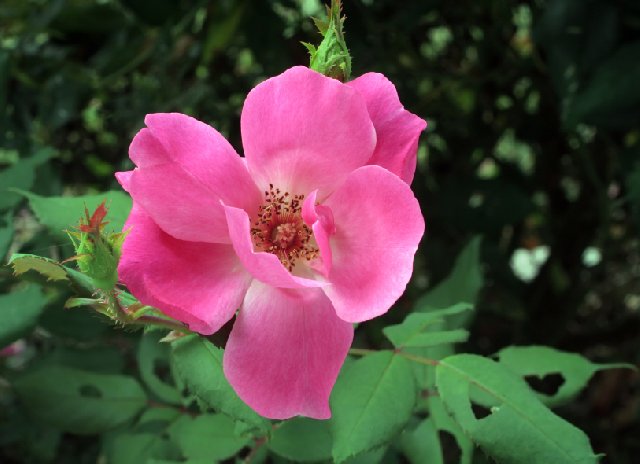|
|
ColorHow to Add Color to Your LandscapeAs spring approaches, the grass gets a little greener every day, daffodils start to push themselves to the surface, and people begin to think about how they can join the celebration by adding color to their own landscapes. Everyone likes to step outside this time of year and see color blooming in full force, and with a few purchases your yard can join in the fun. Plan One of the most overlooked and under appreciated elements of your landscape is a landscaping plan. Before you go out to the local nursery and start buying plants that make you "ooh" and "ahh", make sure that you know exactly where they will be going in your yard. It is easy to get excited and start filling up your car with plants that you have no idea what to do with when you get home, or that aren't suited for your landscape. It is wasted time and money and can be avoided with a little pre-planning. Flowers One of the simplest and most obvious ways to add color to your landscape is to head to the flower department. Annuals give you the opportunity to have a brand new garden every year and are a great place to start. Popular choices include begonias, snapdragons, geraniums, and inpatients. You can plant these in small areas with plants of all the same color or in bigger planting areas, choosing several different colors to spice it up. It is important to remember that annuals differ in the amount of sunlight and water that they need. Be sure to read the identification that comes with the flower and find a spot in your yard that will work for its growing habits. Trees Another idea to add color to your yard is to add small trees. Small trees not only add shade, but can color at different times during the year, always leaving your landscape with something to show off. Popular choices include crepe myrtles, cherry trees, Japanese dogwood, and magnolia trees. Remember that these are trees, not flowers or shrubs and they are going to grow as such. Leaving enough space for a tree to mature is a choice you will enjoy ten years down the road. Portable Don't forget about hanging baskets, window boxes and flower pots as a quick and easy way to add color to your landscape. Make sure you have potting soil and a container big enough and you can add color in a matter of minutes, dramatically changing the look of your landscape. With a few of these changes done on a weekend, your landscape will be ready to usher in spring in full force this year. For more information on our landscaping services or to speak with one of our landscape experts, contact us today! Posted: August 22nd, 2012 | Permalink The "Knock Out" Family of RosesThey are not only disease resistant, but this rose requires very little pruning. "Knock Out" Roses are self-cleaning a so there is no need to deadhead. There are seven varieties of "Knock Out" Roses. We have seen the most performance from the red "Knock Out" Roses. Posted: May 10th, 2012 | Permalink Quick Tip #1
Landscape with watering in mind.
Avoid planting turf species that require frequent watering, such as bluegrass or ryegrass.
Design your landscape to minimize water runoff onto hard surfaces and into storm drains.
To reduce runoff, install nonirrigated buffer areas, which include water-efficient plants or permeable features, next to sidewalks or on slopes.
Aerate heavy or compacted soils, so water can easily move down to reach grass roots.
Install an irrigation system that you can adjust to properly water areas of your landscape that have different requirements.
Aerate heavy soils to improve your lawn.
Water only when your lawn needs it.
Water requirements vary according to turf species, location, and month of the year.
Most lawns need water when the top 2 inches of soil have dried out.
Shady and sunny areas and different soil types will have different water requirements.
Deeper, less frequent watering is best for most lawns. Water only 2 to 3 times a week.
Make sure your sprinkler system isn’t producing runoff, especially on slopes. If you see runoff, use shorter watering times and repeat the cycle to allow time for the water to move into the soil.
Water early in the morning when evaporation and wind are minimal.
Adjust your watering schedule seasonally, and shut off your irrigation system during rainy weather.
Check sprinkler system output with a “can test”.
Maintain your irrigation system.
Check your irrigation system regularly for leaks, broken or misdirected heads, faulty valves, and other malfunctions. Adjust sprinklers to keep water off driveways, sidewalks, and streets.
Improve your system with devices such as rotor heads, “smart” (ET) controllers, and soil moisture sensors.
Use a “can test” to see how evenly your sprinkler system covers different areas of your lawn and to estimate how long to water.
Posted: October 18th, 2011 | Permalink |





